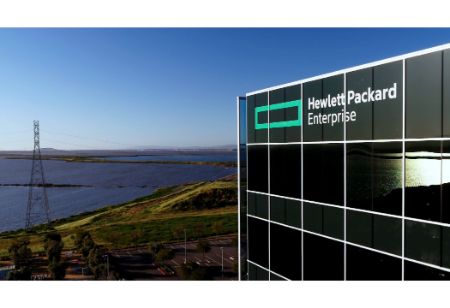
HPE Accelerates Space Exploration; to Increase Self-Sufficiency for Astronauts


Hewlett Packard Enterprise (HPE) announces it is accelerating space exploration and increasing self-sufficiency for astronauts by enabling real-time data processing with advanced commercial edge computing in space for the first time. HPE’s Spaceborne Computer-2 (SBE-2), an edge computing system, will help astronauts and space explorers aboard the International Space Station (ISS) to speed time-to-insight from months to minutes on various experiments in space. This includes processing medical imaging and DNA sequencing to unlocking key insights from volumes of remote sensors and satellites.
Spaceborne Computer-2 is scheduled to launch into orbit on the 15th Northrop Grumman Resupply Mission to Space Station (NG-15) on February 20 and will be available for use on the ISS for the next two-three years. The NG-15 spacecraft has been named “SS. Katherine Johnson” in honor of Katherine Johnson, a famed Black, female NASA mathematician who was critical to the early success of the space program.
The upcoming launch of Spaceborne Computer-2 builds on the proven success of its predecessor, Spaceborne Computer, a proof-of-concept that HPE developed and launched in partnership with NASA in 2017 to operate on the International Space Station (ISS) for a one-year mission. HPE successfully accomplished its one-year mission with Spaceborne Computer. The next move is to launch an even more advanced system called Spaceborne Computer-2, through a sponsorship from the ISS US National Laboratory. It is set to launch the move this month and be installed on the ISS for the next two-three years for wider use.
Spaceborne Computer-2 will offer twice as much compute speed with purpose-built edge computing capabilities powered by the HPE Edgeline Converged Edge system and HPE ProLiant server to ingest and process data from a range of devices, including satellites and cameras, and process in real-time.
Spaceborne Computer-2 will also come equipped with graphic processing units (GPUs) to efficiently process image-intensive data requiring higher image resolution such as shots of polar ice caps on earth or medical x-rays. The GPU capabilities will also support specific projects using AI and machine learning techniques.
The combined advancements of Spaceborne Computer-2 will enable astronauts to eliminate longer latency and wait times associated with sending data to-and-from earth to tackle research and gain insights immediately for a range of projects. This includes real-time monitoring of astronauts’ physiological conditions, and making sense of volumes of remote sensor data.
“The most important benefit to delivering reliable in-space computing with Spaceborne Computer-2 is making real-time insights a reality. Space explorers can now transform how they conduct research based on readily available data and improve decision-making,” said Dr. Mark Fernandez, solution architect, Converged Edge Systems at HPE, and principal investigator for Spaceborne Computer-2. “We are honored to make edge computing in space possible and through our longstanding partnerships with NASA and the International Space Station U.S. National Laboratory, we are look forward to powering new, exciting research opportunities to make breakthrough discoveries for humanity.”
Through a collaboration with Microsoft Azure Space, researchers around the world running experiments on Spaceborne Computer-2 have the opportunity to burst to the Azure cloud for computationally intense processing needs that require that can also seamlessly transmit results back to SBC-2.
Submissions for research considerations on Spaceborne Computer-2 are open now.